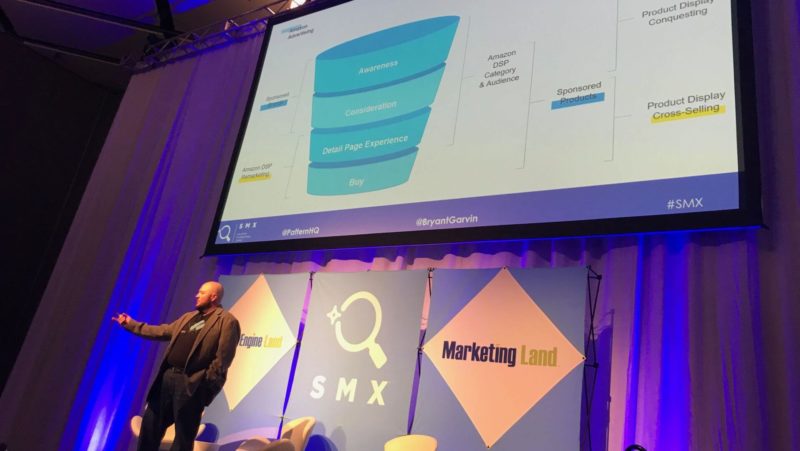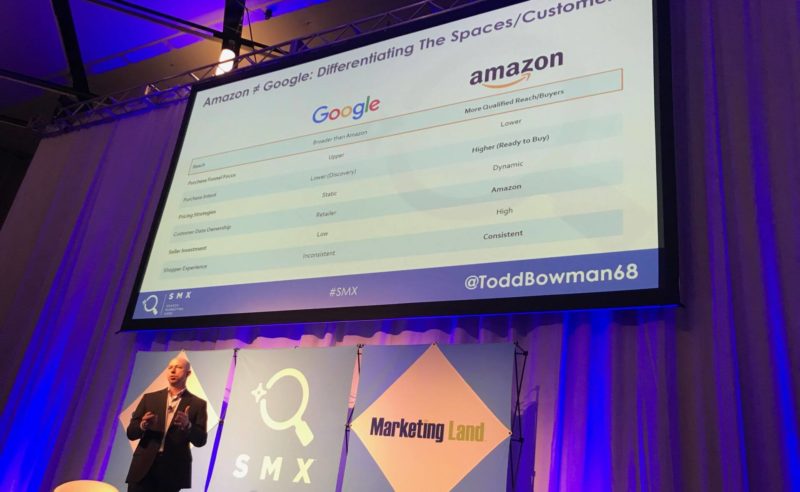Key considerations for achieving success on Amazon
Expert tips for making the most of Amazon's advertising offerings and factors to manage before you even get started.
Amazon can deliver customers at unmatched scale, but it requires significant seller investment compared to running campaigns on Google, Todd Bowman, senior director of Amazon and eRetail at Merkle, told the audience at SMX West in San Jose, California, last week.
In the same session, Bryant Garvin, director of advertising at e-commerce brand partner Pattern, discussed many of these factors while stressing that sellers with adequate resources and capabilities shouldn’t be scared away by the necessary adaptations.
Consideration factors unique to marketing on Amazon
One of the biggest differences between Amazon and Google, said Garvin, is the relationship between organic and ad optimization. The Amazon algorithm is designed to reward sales: with more sales comes more visibility. For starters, that means Amazon advertisers need to pay close attention to product detail pages because not only are these often your landing pages, but many of those details get pulled into ads as well.
Pricing, reviews, images, customer feedback, shipping speed, response rates and stocked inventory are all critical factors for Amazon sellers. Additionally, there are features unique to Amazon such as Buy Box (Add to Cart) and Prime shipping eligibility that can determine the viability and success of your ad campaigns.
A four-pronged ads strategy
Bowman laid out four steps to a winning strategy with Amazon ads for sellers on the platform. The first priority, he said, is brand protection with ads targeting brand keywords related to your high-priority products. Next is to focus on new customer acquisition by expanding your keyword targets to non-brand and upper-funnel terms in relevant categories and interest areas. The third step is to market up-sell and cross-sell opportunities. And finally, conquest market share by targeting competitor keywords and products.
Garvin mapped out a similar strategic approach aimed at setting up ad campaigns based on goals dubbed CABN — for conquest, automatic, branded and non-branded targeting. He then mapped out how the various elements of Amazon’s ad ecosystem — including Sponsored Brands, Sponsored Products, Product Display formats, as well as category and audience targeting and remarketing through Amazon DSP — can be used in combination to reach users at all phases of the customer journey from awareness to purchase to upsell and cross-sell.
Benefits of Bulk Sheets
If you’re not working with an API partner, you can use Amazon Bulk Sheets to scale your advertising efforts, make a lot of changes and launch multiple campaigns quickly. Merkle has its own technology that leverages the API now, but before that was available, Bowman said his team was able to create and launch 34 new campaigns with 3,700 keywords just two days after receiving incremental budget and revised goals from a client.
Bulk Sheets still require a bit of work, he admitted, but filtering the sheets to include required columns and only those you want to update can make them easier to manage.
Bowman noted many of the updates Amazon made to its advertising tools and platforms last year have helped bring parity between the third-party retail and vendor sides of the business. Among the benefits: ads can now get approved in hours not days.
Contributing authors are invited to create content for Search Engine Land and are chosen for their expertise and contribution to the search community. Our contributors work under the oversight of the editorial staff and contributions are checked for quality and relevance to our readers. The opinions they express are their own.
Related stories

